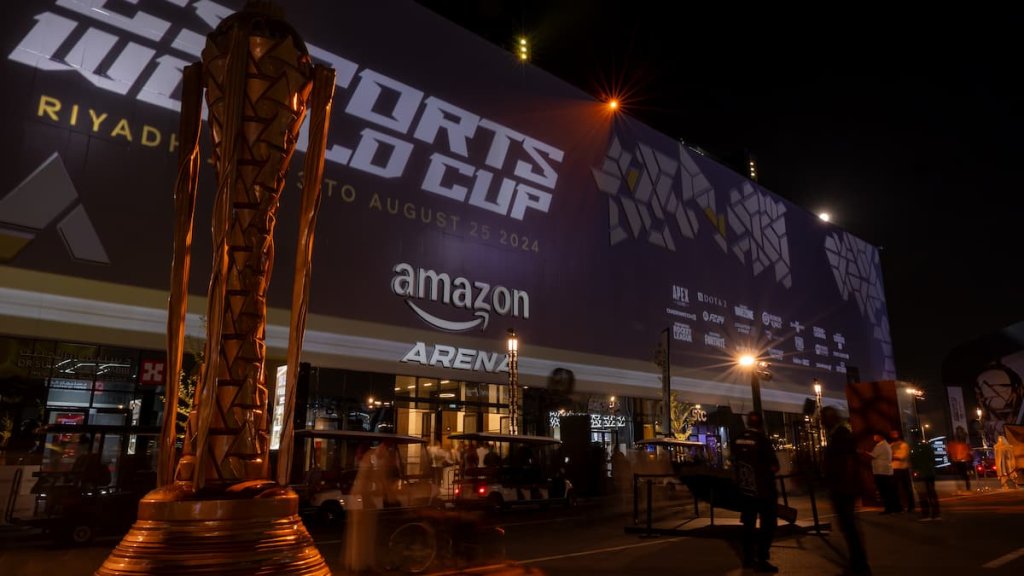
How Can Esports Orgs Become Profitable? | Esports Earnings Revealed
For more than a decade, modern esports organisations have been expanding at a staggering rate. It seems that, within the space of a few years, ‘esports orgs’ have gone from small, anonymous teams to multi-national, multi-million-dollar franchises. For some of these firms, their growth has been equal parts unprecedented and unexpected, with the esports industry experiencing a boom across all sectors. Today, we’re here to look at published esports earnings and discuss how esports organisations can become more profitable.
As the old saying goes, ‘diversification is the key to success’, and that’s certainly true for many of these esports organisations. With their record-breaking growth, many of these companies have expanded into multiple verticals, soaking up as many avenues of revenue as possible. As technology and society develop and advance, how do esports organisations keep up and remain profitable?
Let’s look at these esports earnings and figure it out.
Growth-Driven Growth

The growth of esports’ revenue over time, according to Statista
It’s no big secret: esports is growing at a rapid rate. With each passing day, it seems that esports betting, merchandising, sponsorships, and the tournaments themselves are getting bigger, bolder, and more valuable. For the top firms in the business, such as FaZe Clan, EnthusiastGaming, TSM, and OverActive Media, the growth of the industry as a whole drives the growth of the companies within the ecosystem.
For instance, let’s look at EnthusiastGaming, the parent body behind Luminosity Gaming, the CDL’s Seattle Surge, the OWL’s Vancouver Titans, and many media subsidiaries. In 2021, Enthusiast recorded revenue growth of $133.8m. Behind Enthusiast sat FaZe Clan, arguably one of the most prolific brands in esports today. In 2021, FaZe Clan reported respective revenue growth of $52.9m.
While these firms also reported high net losses, it’s argued that this is due to a constant spate of acquisitions taking place within these esports organisations. According to industry experts, we’re still some way from seeing net profit reports published, but these figures are in line with expectations, especially considering the overall ‘youth’ of the industry and the organisations in question.
But with that fact in mind, and with the esports earnings on the table, how can esports organisations become more profitable?
What’s the key to succeeding and expanding as an esports organisation?
Financing The Future
We’re seeing growth across the board in the gaming and esports industries. From participation to awareness, esports betting sites to broadcasting, and from diversity to investments, esports is becoming an unimaginable titan of our modern world. Once upon a time, it was a stigmatized, underrepresented concept, and today, as an industry, it boasts a billion-dollar value, with hundreds of millions of fans around the world.
For esports organisations, the vast bulk of their value comes from sponsorships and partnerships. For some, the most valuable deals can be worth millions of dollars and last several years. Recently, there has been a trend of ‘non-gaming partners’ stepping up to sponsor esports orgs. We’ve seen research that suggests esports fans are more likely to ‘notice’ sponsorships than traditional sports fans – so the value is definitely there.

Astralis reported that 70% of its total revenue came from CSGO
Elsewhere, a huge portion of revenue comes from winning tournaments – as you might have expected. For instance, Astralis, a Danish organisation, has reported that 70% of its total revenue comes from its CSGO division, which includes winnings as well as merchandising and sponsorships. Most amateur and up and coming teams also rely on tournament winnings as the main source of revenue.
The Next Steps
So, when discussing esports earnings, we need to look at how these organisations can simply make more money.
Firstly, we can look at technological advances, such as the emerging crypto and NFT markets. In 2021, FaZe Clan struck a partnership with MoonPay, directly linking the organisation with developments taking place between esports and digital currency platforms. Teams like TSM, Natus Vincere, OG, Vitality have all looked to some form of crypto-level partnership. From simply partnering crypto platforms like FTX to fan tokenization via Socios, there are tangible links between the demographic of both that industry and the esports industry.
For years, merchandising has been a key growth factor for esports organisations. Not only is it a marketing tool, but it’s also a fantastic avenue for revenue, with many esports fans being eager to acquire the latest jerseys, caps, hoodies, and other accessories. With partnerships, esports organisations could take advantage of deeper merchandising – such as the deals that exist with peripheral manufacturers such as Scuf, Turtle Beach, and Steel Series.
A new less explored avenue is fashion and developing entire apparel lines different from branded jersey and fan merch. Events like the Esports Fashion Week are hinting towards esports developing as a lifestyle, and there should be plenty of takers for this industry segment.

FaZe Clan has enjoyed a lengthy partnership with Scuf
Outside of these areas, the more advanced esports organisations could seek to develop their own products in-house. For instance, a monetised or gamified app that rewards fans for interacting with a product or service. There’s the opportunity for paid-for content, such as an exclusive series or a one-off production that comes hand-in-hand with broadcasting rights. Or, as we’ve seen in recent years, organisations can sign top-tier content creators, bringing them into the fold and taking advantage of their immense popularity.
Ultimately, should an esports organisation deem itself in a position to do so, it could go public. In May of 2021, Astralis became one of the first esports orgs to be listed on the US Stock Market, hosting an IPO that was a considerable success. At the end of 2021, FaZe Clan went big and bold with a $1 billion IPO-slash-merger.
Winning strategy
Across the board, there isn’t a winning strategy on how to turn an organization profitable and independent from relying exclusively on player/team success or sponsorships. Different organizations investigate different avenues of product development, but none is big enough to fail just yet.
The few key examples of how an esports organisation can become more profitable, come from various actors all developing their niche. As the next few years unfold, we’re all expecting immense growth to come pouring out of the esports industry. Which organisation will be the next to truly make it big?












